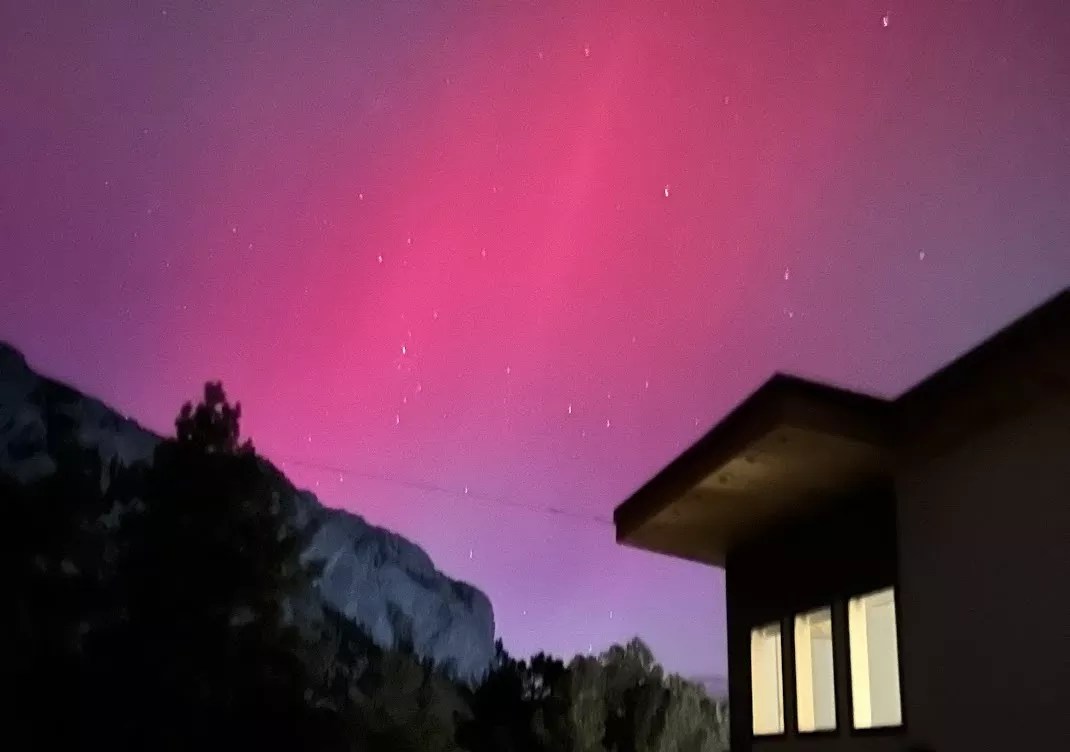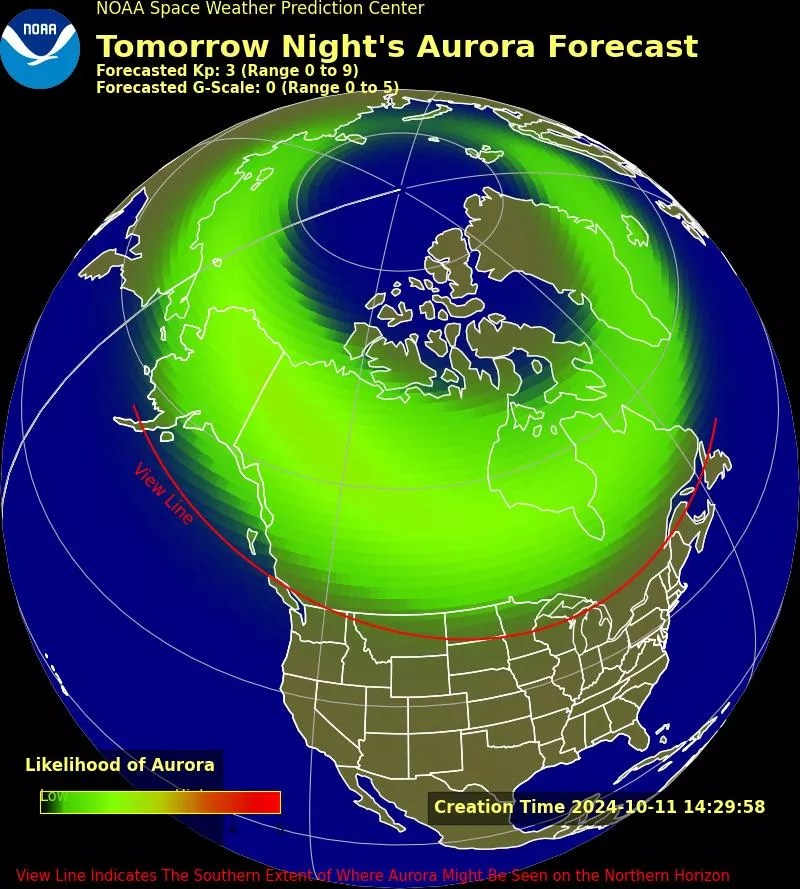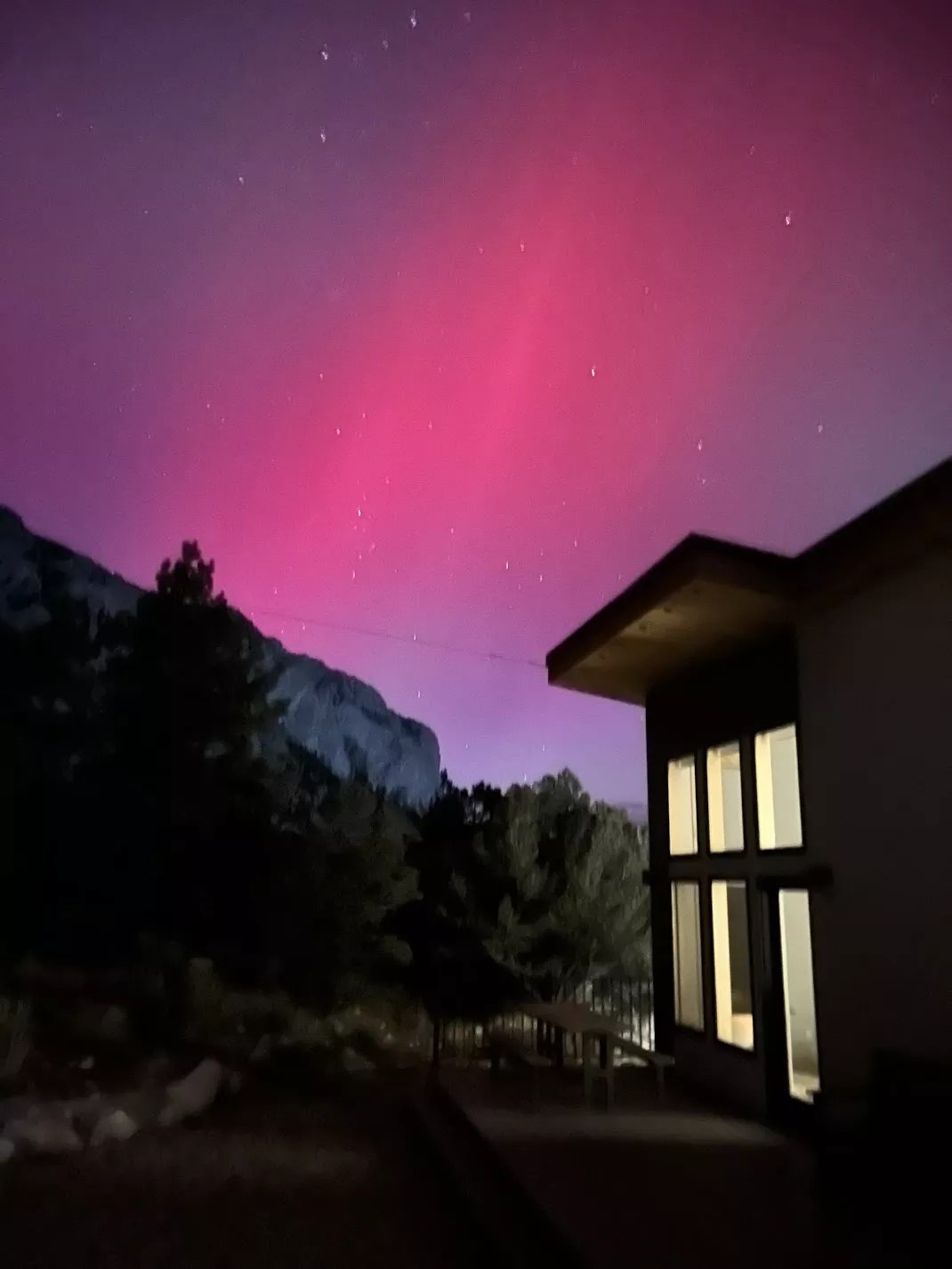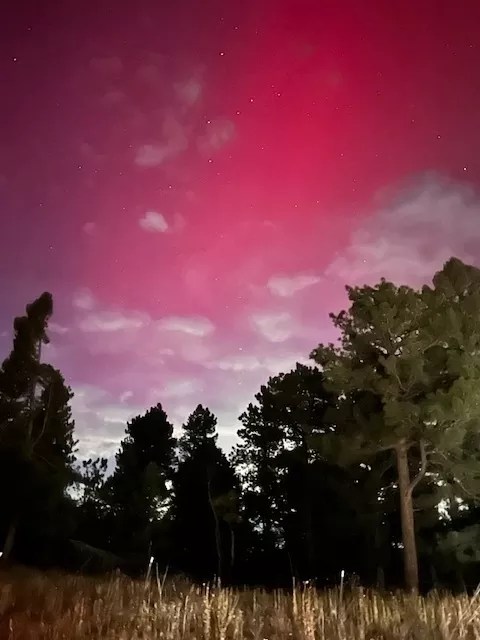
Moira Nolan

Audio By Carbonatix
Colorado received a real dose of the Aurora Borealis light show last night, October 10, and is expected to get another one tonight, October 11. It will be the second time the Northern Lights have hit Colorado in 2024 and the first since the spectacular display on May 10 and 11.
On Earth, we get to witness the solar show, but the National Oceanic and Atmospheric Administration (NOAA) refers to it as a coronal mass ejection (CME), which is an eruption of solar materials and magnetic fields.
NOAA officials said that this solar storm arrived on Earth on October 10 at 9:15 a.m. and will continue over the course of the next two days. NOAA has issued a G3 Geomagnetic Storm Warning following the arrival of the CME, which could very likely affect power grids and satellite and GPS systems where the geomagnetic activity of the light show is most active.
So where can Coloradans see the lights? Chris Bianchi, 9News meteorologist, told followers on X to head up to the Colorado-Wyoming border from 7 to 11 p.m. for the best chance of catching the light show.

NOAA’s predicted Aurora Borealis view line for October 10 and October 11.
National Oceanic and Atmospheric Administration (NOAA)
NOAA officials advise viewers to get away from city lights, no matter where they are in the country, to increase their chances of witnessing the Aurora Borealis. The National Weather Service also predicts partly cloudy to mostly clear skies for tonight and tomorrow night, creating the perfect conditions for light show enthusiasts.
The brightest light displays will be most visible in the northernmost states and toward Canada, says NOAA, but southern states like Florida might still feel the impacts of the geomagnetic storm. NOAA predicts that this geomagnetic storm could impact recovery efforts for Hurricane Milton by affecting communication systems, power grids and GPS services.
Check out photos of last night’s northern lights action in Buena Vista and Conifer below.

A full shot on Nolan’s photo in Buena Vista.
Moira Nolan
Another reader from Conifer submitted this photo with a little more cloud coverage.

Northern lights in Conifer on October 10
Westword reader